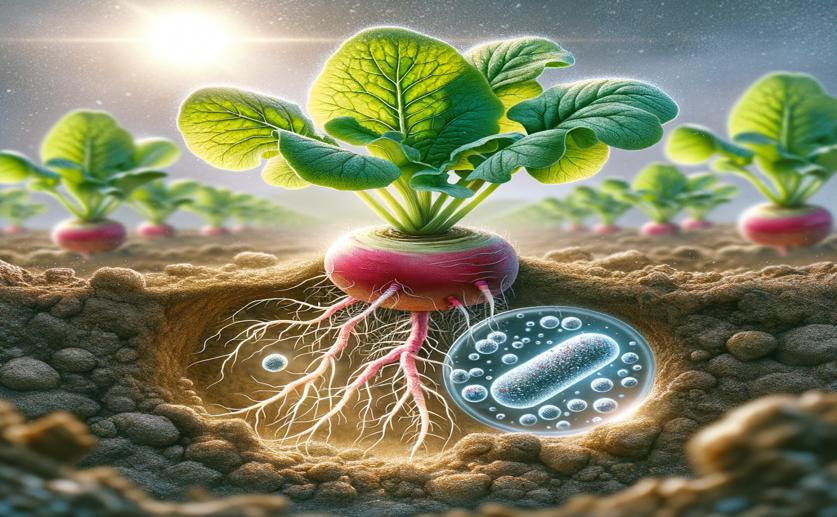
Using a Special Bacterium to Boost Radish Resistance and Clean Up Chromium Soil
Jim Crocker
10th May, 2024

Image Source: Natural Science News, 2024
Key Findings
- Researchers at Henan University discovered a bacteria, Microbacterium LBA108, that reduces toxic chromium in the environment
- The LBA108 strain removed 96.64% of Cr(VI) from a solution in 48 hours, making it less harmful
- When used with radish seedlings, LBA108 improved plant growth and reduced chromium levels in edible parts
EnvironmentBiotechPlant Science
References
Main Study
1) Inoculation of chromium-tolerant bacterium LBA108 to enhance resistance in radish (Raphanus sativus L.) and combined remediation of chromium-contaminated soil.
Published 9th May, 2024
https://doi.org/10.1039/d3em00556a
Related Studies
2) Enhancement of toxic Cr (VI), Fe, and other heavy metals phytoremediation by the synergistic combination of native Bacillus cereus strain and Vetiveria zizanioides L.
3) Isolation and characterization of a highly effective bacterium Bacillus cereus b-525k for hexavalent chromium detoxification.



 9th April, 2024 | Jim Crocker
9th April, 2024 | Jim Crocker